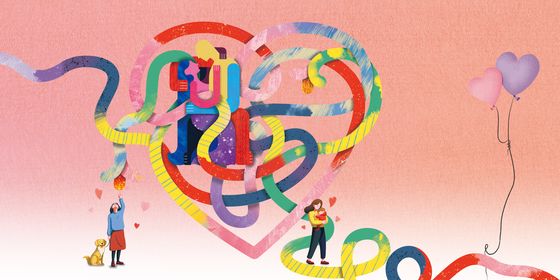Though modern policies created a generation of only children, sibling relationships were highly valued in ancient China
Today is Sibling Day, a holiday that celebrates the relationship between brothers and sisters.
Though many young Chinese born under the one-child policy (1982 – 2015) are the only child of their parents, the bond between children of the same family was highly valued in traditional culture. An ancient metaphor likens siblings to one’s “hands and feet” (手足), implying that they are indispensable parts of a person, and several other idioms attest to the importance of this relationship (though, due to patriarchy, most refer to the bond between brothers):
兄友弟恭 Kind elder brother and respectful younger brother
The relationship between brothers is one of the five core social bonds in Confucian teachings. Just as children were supposed to be filial to their parents, younger brothers had to show fraternal respect to their elder brothers, known as 悌 (tì). In return, elder brothers had to be kind to and look after their younger brothers. The idiom 兄友弟恭 is usually used in a pair with “父慈子孝 (benevolent father and filial son)” to describe the ideal family environment.
同气连枝 Of one breath and linked branches
This idiom is a metaphor for the close connection between siblings, likening children born of same parents to branches of the same tree. Unrelatedly, this phrase also describes an affectionate husband and wife.
灼艾分痛 Burn the mugwort and share the pain
Zhao Kuangyin, Emperor Taizu of the Song dynasty, was historically known as a good brother. According to the History of Song, when his younger brother Zhao Guangyi, who later succeeded him as emperor, became ill, Emperor Taizu personally burned mugwort and applied it to his brother’s acupoints. This was believed to be a useful treatment, but a painful one, so Emperor Taizong burned himself with mugwort in order to share his brother’s pain. Eventually, this saying came to describe deep affection between siblings.
兄弟阋墙 Quarrel between brothers
Blood-related siblings don’t always get along, but the ancients seemed to believe that small quarrels within the family were no big deal. A poem in The Book of Songs (1046–771 BCE) goes: “Brothers quarrels inside the house, but fight together against external enemies. (兄弟阋于墙, 外御其侮。)” The first half of this verse evolved into a chengyu, referring to sibling conflicts.
煮豆燃萁 Boiling beans with beanstalks
Other times, sibling rivalry can turn serious, and it’s not rare to find accounts of brothers killing each other in Chinese history. The most widely know case took place during in the Three Kingdoms period. Cao Pi and Cao Zhi, sons of famous warlord Cao Cao, were both good at writing poems, but Cao Zhi had a better reputation. After their father died, Cao Pi, the older brother, inherited the throne of the State of Wei. Out of jealousy, he looked for an excuse to kill Cao Zhi. According to A New Account of Tales of the World, Cao Pi invited his brother to a banquet and ordered him to compose a poem within seven strides, or be executed. Cao Zhi saw through his brother’s intentions, and produced a poignant poem to express how heartbroken he was:
煮豆燃豆萁, People burn the beanstalk to cook beans,
豆在釜中泣。 The beans in the pot cry out.
本是同根生, They are born of the same root,
相煎何太急。 Why should they hound each other to death?
Cao Zhi’s life was spared, or so the story goes, and the poem became so well-known that it has been summarized into a chengyu describing brothers harming one another.












